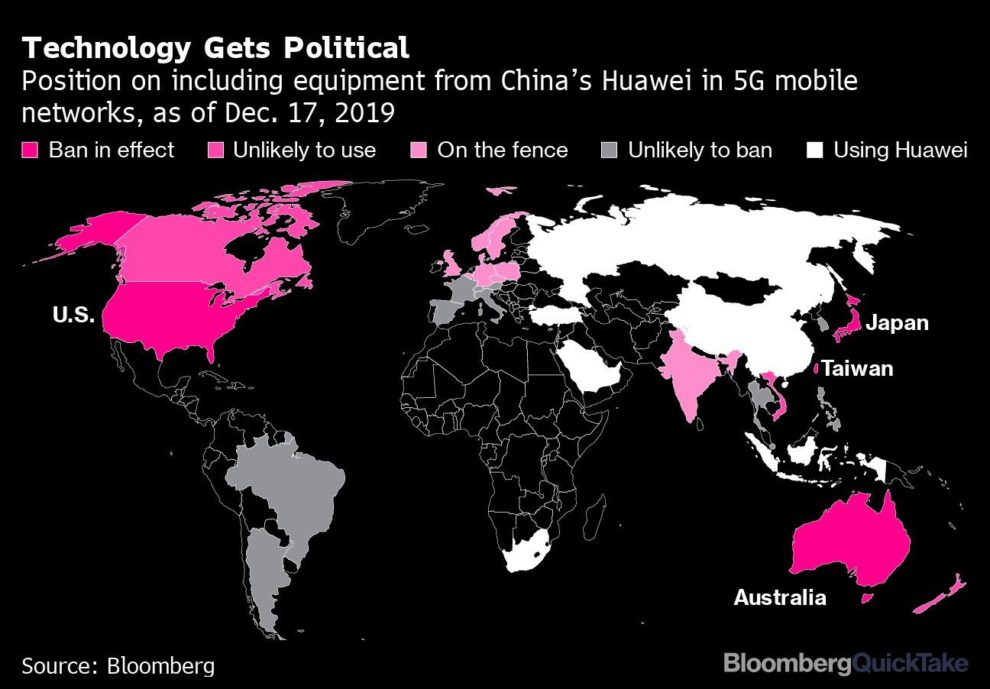
(Bloomberg) — Huawei Technologies Co. will overhaul its management ranks after revenue growth slowed in the latter half of 2019, when U.S. sanctions spooked customers and suppliers around the globe.
China’s biggest technology company recorded an 18% rise in sales to 850 billion yuan ($120 billion) this year, down from about 23% in the first half and missing its own internal targets. Huawei should brace for a similar hit in 2020 if the White House maintains curbs on the sale of software and circuitry it needs, like essential Android phone apps, Rotating Chairman Eric Xu said in a Tuesday memo to Huawei’s 190,000 employees.
Huawei went to a war footing after the Trump administration blacklisted the Chinese goliath in May, labeling it a threat to U.S. national security. In response, Huawei mobilized thousands of engineers to develop alternatives to crucial U.S. components and appealed to domestic users to drive 16.5% growth in shipments to 240 million smartphones in 2019. Huawei would have shortly become the world’s No. 1 mobile brand were it not for the sanctions, consumer chief Richard Yu said in a separate memo.
Xu outlined the need to weed out as many as 10% of the company’s worst-performing managers in 2020. Some support or even operational units will be merged or downsized, Xu said, adding employees could get re-assigned to other divisions.
“Survival will be our first priority,” said Xu, one of three executives who take turns running the tech giant during the year. “We won’t grow as rapidly as we did in the first half of 2019, growth that continued throughout the year owing to sheer momentum in the market.”
Read more: Tech Shudders as U.S. Weighs New Limits on Huawei Sales
White House sanctions have hit Huawei’s smartphone unit in particular, because the company is barred from using Google’s latest Android operating system and applications including Google Play and Gmail, Huawei’s billionaire founder Ren Zhengfei has said. Huawei, the world’s second largest smartphone vendor, grew its global smartphone shipments by 28% in the third quarter, further closing the gap with Samsung Electronics Co., according to latest data from IDC. The advance was mainly driven by domestic demand, where Huawei took more than 40% market share.
The Huawei executives on Tuesday highlighted major tasks for 2020, including a priority of developing self-sufficiency in everything from semiconductors to software as fifth-generation mobile technology rolls out across the globe.
The company is betting on its own mobile apps ecosystem, known as Huawei Mobile Services, to continue driving phone sales overseas without Google’s suite of apps. That in-house package of apps now counts 400 million monthly active users, consumer chief Yu said. It also aims to expand the use of self-made chips in cloud and enterprise businesses.
“2020 is when we’ll see 5G take off on a major scale, even as the AI era arrives,” Yu said in his memo. “Uncertainty will increase next year, and that’s when our real test will begin.”
How Huawei Landed at the Center of Global Tech Tussle: QuickTake
(Updates with consumer chief’s comments from the third paragraph)
To contact Bloomberg News staff for this story: Gao Yuan in Beijing at [email protected]
To contact the editors responsible for this story: Edwin Chan at [email protected], Colum Murphy
<p class="canvas-atom canvas-text Mb(1.0em) Mb(0)–sm Mt(0.8em)–sm" type="text" content="For more articles like this, please visit us at bloomberg.com” data-reactid=”58″>For more articles like this, please visit us at bloomberg.com
©2019 Bloomberg L.P.






